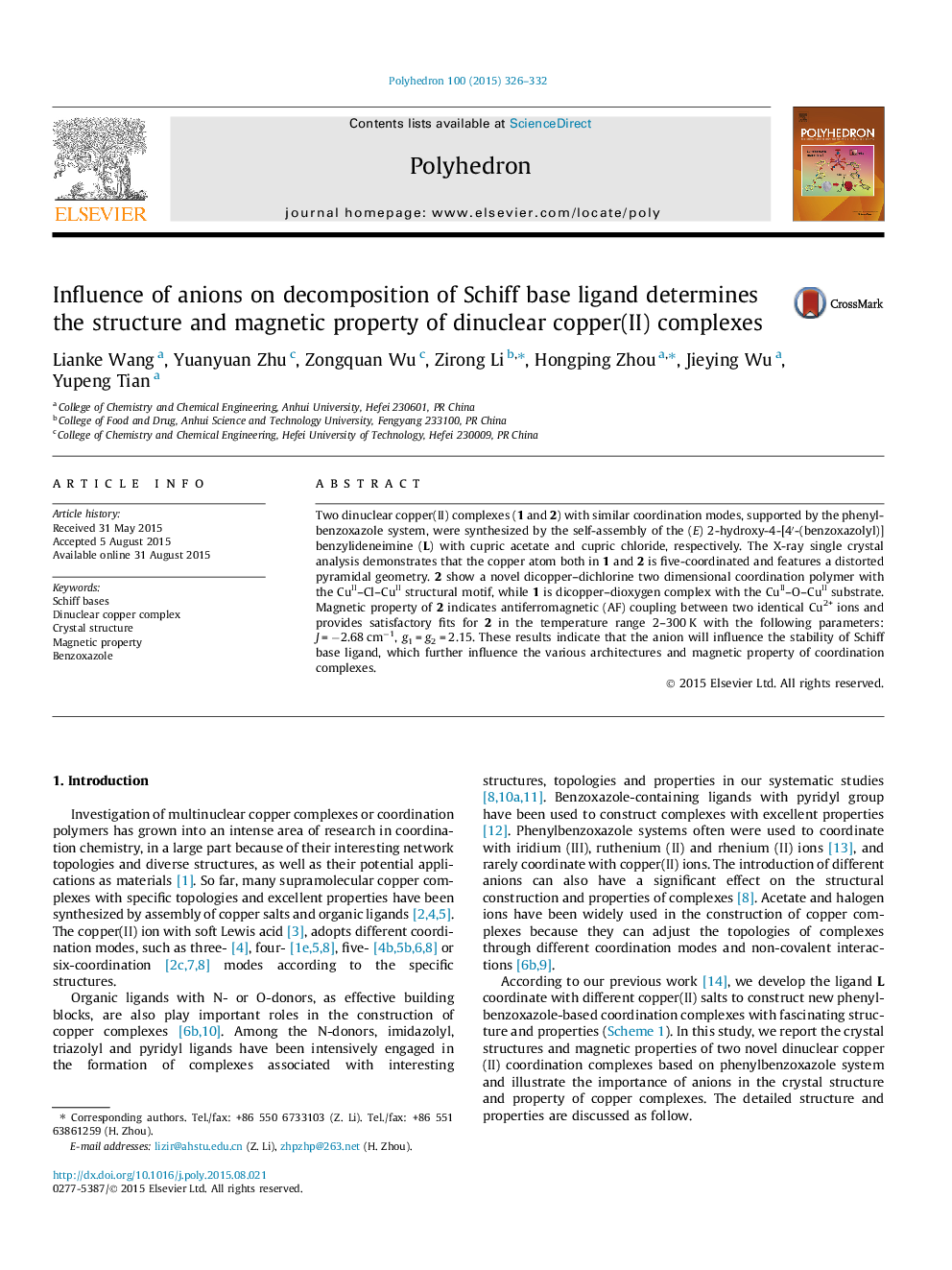| Article ID | Journal | Published Year | Pages | File Type |
|---|---|---|---|---|
| 1335949 | Polyhedron | 2015 | 7 Pages |
Two dinuclear copper(II) complexes (1 and 2) with similar coordination modes, supported by the phenylbenzoxazole system, were synthesized by the self-assembly of the (E) 2-hydroxy-4-[4′-(benzoxazolyl)]benzylideneimine (L) with cupric acetate and cupric chloride, respectively. The X-ray single crystal analysis demonstrates that the copper atom both in 1 and 2 is five-coordinated and features a distorted pyramidal geometry. 2 show a novel dicopper–dichlorine two dimensional coordination polymer with the CuII–Cl–CuII structural motif, while 1 is dicopper–dioxygen complex with the CuII–O–CuII substrate. Magnetic property of 2 indicates antiferromagnetic (AF) coupling between two identical Cu2+ ions and provides satisfactory fits for 2 in the temperature range 2–300 K with the following parameters: J = −2.68 cm−1, g1 = g2 = 2.15. These results indicate that the anion will influence the stability of Schiff base ligand, which further influence the various architectures and magnetic property of coordination complexes.
Graphical abstractThe anion influence the stability of Schiff base ligand, which further induce the various architectures and magnetic property of coordination complexes.Figure optionsDownload full-size imageDownload as PowerPoint slide
